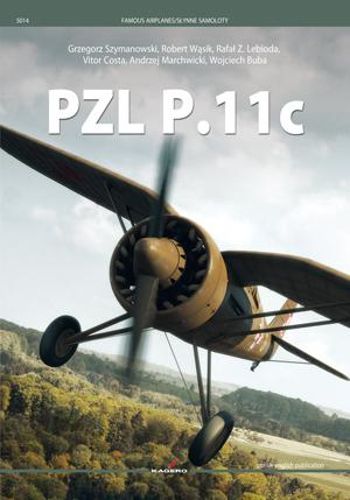Readings Newsletter
Become a Readings Member to make your shopping experience even easier.
Sign in or sign up for free!
You’re not far away from qualifying for FREE standard shipping within Australia
You’ve qualified for FREE standard shipping within Australia
The cart is loading…






The most complete book about the Polish fighter PZL P.11 C for modellers . If you were to ask about the symbolic aircraft of the desperate defense of Polish sky during the tragic month of September ‘39, without any doubt the answer should be one
the PZL P.11c. Although older machines (PZL P.7a and P.11a) fought next to it, the mentioned variant was a true backbone of the defense force. Pilots liked P.11c but in all publications it is described as obsolete. It was the penultimate stage in the evolution of a long line of fighter planes, no longer having the disadvantages of the infant period, but also actually constituting a closed alley in the evolution of this type of design. The PZL P.11g modification showed that the already mature construction can only be improved to a small extent. Being an export alternative, faster, equipped with a much more powerful engine and better armed PZL P.24 were actually the end of the possibilities of high wing strut aircraft. This was understood in Poland, where design offices were no longer involved in the further development of such structures (P.11g was just an emergency attempt to obtain not the most modern, but an efficient fighter). Unfortunately, it was not possible to produce or buy a successor abroad on time. That is why Poland entered the conflict equipped with fighter planes, once belonging to the world leaders, but giving way to the latest enemy machines. Colour profiles, 504 colour and archival photos, drawing sheets
$9.00 standard shipping within Australia
FREE standard shipping within Australia for orders over $100.00
Express & International shipping calculated at checkout
The most complete book about the Polish fighter PZL P.11 C for modellers . If you were to ask about the symbolic aircraft of the desperate defense of Polish sky during the tragic month of September ‘39, without any doubt the answer should be one
the PZL P.11c. Although older machines (PZL P.7a and P.11a) fought next to it, the mentioned variant was a true backbone of the defense force. Pilots liked P.11c but in all publications it is described as obsolete. It was the penultimate stage in the evolution of a long line of fighter planes, no longer having the disadvantages of the infant period, but also actually constituting a closed alley in the evolution of this type of design. The PZL P.11g modification showed that the already mature construction can only be improved to a small extent. Being an export alternative, faster, equipped with a much more powerful engine and better armed PZL P.24 were actually the end of the possibilities of high wing strut aircraft. This was understood in Poland, where design offices were no longer involved in the further development of such structures (P.11g was just an emergency attempt to obtain not the most modern, but an efficient fighter). Unfortunately, it was not possible to produce or buy a successor abroad on time. That is why Poland entered the conflict equipped with fighter planes, once belonging to the world leaders, but giving way to the latest enemy machines. Colour profiles, 504 colour and archival photos, drawing sheets